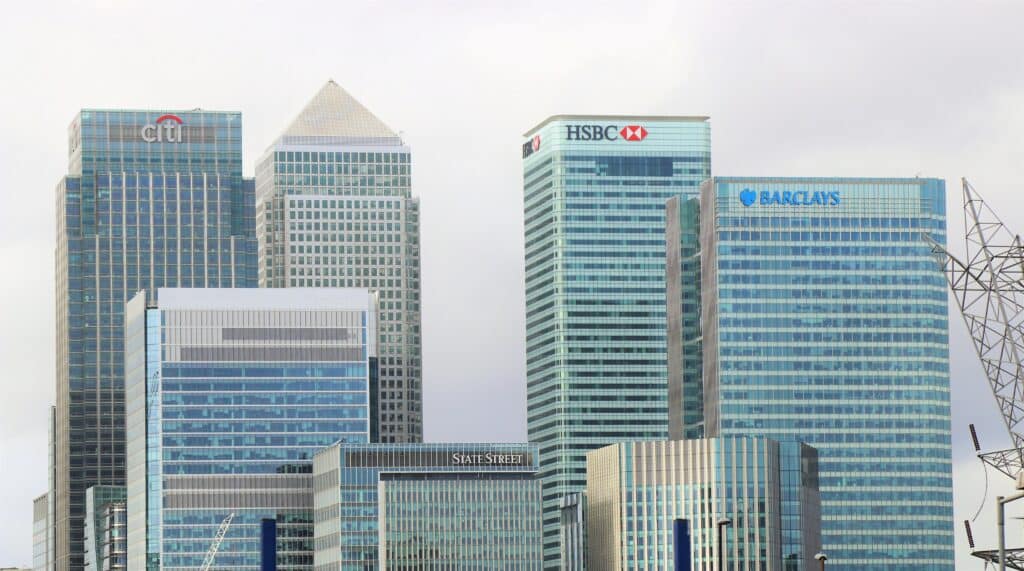What Are The Most Widely Utilized Banking Services In Bolivia – that will be the topic of today’s article.
If you want to invest as an expat or high-net-worth individual, which is what i specialize in, you can email me (advice@adamfayed.com) or use WhatsApp (+44-7393-450-837).
Table of Contents
Introduction
The only bank of issue is the Central Bank of Bolivia, which was founded in 1928 and restructured in 1945. The Central Bank Law of 1995 improved the CBB’s banking sector oversight. Bank operations are regulated by the Superintendent of Banks, whereas finance businesses are regulated by the Prudential Norms Financial Committee (CONFIP). Bolivia’s Development Corporation invests Inter-American Development Bank credits in industrial expansion projects.
There are 13 private banks that account for over 85% of the financial system’s deposits and lending. In mid-1985, private banks were significantly deregulated after being under stringent regulation since 1953. Banco Boliviano Americano (BBA), Banco de Credito de Bolivia, Banco de la Nacion Argentina, Banco de La Paz, Banco de la Union, Banco Economico, Banco Industrial SA (BISA), Banco Mercantil, Banco Nacional de Bolivia, Banco Real, Banco Santa Cruz, and Citibank are some of the commercial banks in Bolivia. According to the International Monetary Fund, currency and demand deposits (usually known as M1) totaled $717.9 million in 2001. M2, which includes M1 plus savings deposits, modest time deposits, and money market mutual funds, was $3.7 billion in the same year. The money market rate was 6.99 percent, which is the rate at which financial institutions lend to one another in the near term. The discount rate was 8.5 percent, which is the interest rate at which the central bank lends to financial institutions in the short term.
The main stock exchange in Bolivia is the Bolivian Stock Exchange, which has seven listed businesses in 1995. The Santa Cruz Stock Exchange is another option.
Bolivian Banking Overview
Banco Central de Bolivia regulates Bolivian banks, which include a state bank, commercial banks, credit unions, and savings and loan organizations. The Banco Central is the country’s central bank, which is in charge of monetary policy and banknote issuance.
Moody’s Investors Service changed its outlook on Bolivian banks from negative to stable in late 2020. The rating agency anticipates the country’s GDP growth to stabilize at a relatively high level, and the operational climate in the country to normalize, despite the fact that the banking system’s fundamentals continue to deteriorate for the time being.
This list of major banks in Bolivia is a useful starting point for anyone interested in a financial profession in Bolivia. See our list of financial institutions for additional information.
Bolivia’s Leading Banks
Santa Cruz Mercantil Banco (BMSC)
As a result of the combination of Banco Mercantil and Banco Santa Cruz, Banco Mercantil Santa Cruz S.A. (BMSC) began operations in Bolivia in 2006. The Bolivian bank offers a wide range of products and services to consumers and businesses through 93 branches, 350 ATMs, online and mobile banking platforms, and call centres. BMSC is headquartered in La Paz.
BOB 1.01 billion in revenue (2020)
Bolivian National Bank (BNB)
The Banco Nacional de Bolivia (BNB) is one of Bolivia’s main banks. It was founded in 1871, making it one of the country’s oldest banks.
BNB is a bank established in Sucre that offers a variety of savings, mortgage, and commercial loans, as well as investment banking and credit cards. By 2020, the company will have over 2,000 employees.
BOB 1.03 billion in revenue (2019)
S.A. Banco Bisa
Banco BISA S.A., a Bolivian banking and financial services firm founded in 1963, offers consumer and corporate banking products and services through a network of 66 banking branches, nearly 300 ATMs, contact centres, and other banking platforms.
Its headquarters are in La Paz, and it provides investment banking, mortgage lending, insurance, and risk management services. The bank, formerly known as Banco Industrial S.A., is currently a subsidiary of Grupo Financiero BISA S.A. The company employs about 1,900 people as of 2020.
BOB 1.10 billion in revenue (2019)
Bolivian Bank Of Credit
Banco de Crédito de Bolivia was founded in 1994 after Banco Popular, a Bolivian bank, was purchased by Banco de Crédito del Peru, Peru’s largest bank. Consumer and corporate banking, mortgage loans, mutual funds, and investment banking are among the products and services it provides.
The bank, which is headquartered in La Paz, has 102 branches, 240 ATMs, contact centres, and other financial services.
BOB 77.8 million in revenue (2020)
Unión Banco
As part of the Unión Group, Banco Unión began operations in Bolivia in 1979. It offers financial goods and services, including as savings, checking, investments, microcredit, and loans, from its headquarters in La Paz. Banco Unión aspires to provide financial services across the country while also contributing to the country’s economic and social growth.
S.A. Banco Ganadero
Banco Ganadero S.A. is one of Bolivia’s largest banks, offering a variety of financial services and products such as savings, checking, fixed deposits, consumer credit, loans, insurance, foreign commerce, and currency exchange. It assists individuals and businesses from many industries. Santa Cruz is the company’s headquarters.
BOB 80.8 million in revenue (2020)
S.A. Banco Económico
Banco Económico S.A. was founded in 1991 and provides banking services to individuals and businesses in places such as Santa Cruz, Tarija, Sucre, and La Paz. Savings, checking, term deposits, loans, investment capital, lines of credit, and bills of exchange are among the company’s goods and services. The company will employ around 1,300 people by 2020.
BOB 451.7 million in revenue (2020)
Economic Initiatives Development Bank
Banco para el Fomento an Iniciativas Económicas, based in La Paz, has a network of 210 branches around Bolivia. Until 2010, it was a private financial fund, then a development bank, before becoming the country’s largest microfinance institution, providing microcredit to small enterprises.
The company will employ more than 3,200 people by 2020.
BOB 1.01 billion in revenue (2019)
Solidario Bank
Banco Solidario, or Bancosol, is a Bolivian microfinance bank that provides loans, savings, guarantee funds, credit, and money transfers, as well as insurance, through its network of 96 offices and 199 ATMs. Bancosol is headquartered in La Paz and employs more than 3,100 people.
BOB 1.36 billion in revenue (2019)

Payment Alternatives
Bolivians can pay international merchants in a variety of ways, the most popular of which is through letters of credit. The Bolivian banking system has approved the following payment methods:
An open account transaction affords the buyer protection while posing the highest danger to the seller. After receiving the order, the exporter ships the items and invoices the buyer for payment within 30, 60, or 90 days.
A bank in the importer’s nation operates on behalf of an exporter to collect and remit money for a cargo through documentary collection. The exporter provides the shipping and collection documents to his or her bank (in their home nation), which forwards them to the importer’s correspondent bank. In exchange for cash payment (in the case of “documents against payment” instructions) or a firm commitment to pay on a fixed date (in the case of “documents against acceptance” instructions), the foreign bank (referred to as the presenting bank) hands over shipping and title documents (required for taking delivery of the shipment) to the importer.
Letters of credit are written promises to pay from a buyer’s or importer’s bank to a seller’s or exporter’s bank (called the accepting bank, negotiating bank, or paying bank). A letter of credit guarantees payment of a given amount in a specified currency if the seller meets certain criteria and provides the required documentation within a certain date. A clean bill of lading or air waybill, commercial invoice, and certificate of origin are normally included. The buyer (named the applicant or account party) either pays the stipulated sum (plus service charges) up front to the issuing bank or negotiates credit in favour of the seller or exporter (called the beneficiary). Letters of credit are formal trade documents that are typically used when a seller refuses to give credit to a buyer. The guarantee of payment gives the exporter assurance that the importer will be able to pay for the goods while also guaranteeing the importer that payment would be made only once the letter’s terms have been met.
Bolivians can use Bolivian credit cards or PayPal to make purchases abroad. Foreign credit card holders can use their cards to make purchases in Bolivia, according to their home bank’s rules. Bolivian businesses are unable to charge overseas customers via PayPal or other online payment methods.
Bolivia has no credit rating agencies that rate individual credit. Credit ratings are monitored by the Financial Services Supervisory Authority (Autoridad de Supervisión del Sistema Financiera, or ASFI).
System Of Banking
The Central Bank, two state-owned banks, and 51 privately-owned institutions make up Bolivia’s banking system. Commercial banks account for 13 of the 51 privately owned institutions, while savings and loan organisations, credit unions, and other financial institutions make up the rest. Deposits were expected to be worth $26.5 billion in December 2019.
The government passed the revised Financial Services Law in 2013. The law’s main goals are to safeguard and meet the requirements of financial consumers, as well as to promulgate regulations.
Providing widespread access to services, guaranteeing the financial system’s stability and solvency, safeguarding people’s money, and fostering greater openness are all priorities.
The Financial Stability Board was established by the law, and it consists of the Ministries of Economy and Public Finance, Planning and Development, the Central Bank of Bolivia, the Supervisory Authority Financial System (ASFI), and the Supervision and Control Authority of Pensions and Insurance. This Financial Stability Board is in charge of issuing decrees and resolutions to govern the banking sector, leaving monitoring and supervision to the previous regulator (ASFI).
The Financial Services Law mandates and encourages a high level of government involvement in financial institution administration. The state is expected to be a regulatory authority and an active participant in financial intermediation (through Banco Union and Productive Development Bank), with state representatives attending bank board meetings and shareholder meetings.
The Financial Services Law creates a structure in which the government directs financial firms to promote economic growth. The government can direct financial firms to provide loans to industries it deems fit. In addition, the state sets the maximum interest rates that banks can charge, as well as the grace periods for loan repayment and the types of collateral that can be used to secure a loan. Unconventional loan guarantees, such as machinery, animals, and stored produce, are permitted under government policy.
The law empowers the government to pursue punitive measures against financial firms that fail to comply. Punishment can be applied to specific individuals inside an organisation, including officials and executives’ personal possessions.
The Ministry of Economics and Public Finance, in collaboration with the Central Bank of Bolivia, determines monetary and exchange rate policy, according to the 2009 Constitution (Article 366). To enhance access to credit and other financial services, further regulations allow private financial funds, savings and loans cooperatives, and non-governmental organisations to be established.
The government passed Supreme Decree 1423 in 2012, imposing a fee on dollar exchanges in banks and exchange houses. This tax has no impact on individuals or businesses who utilise dollars; rather, it reduces financial institution profits derived by the difference in exchange rates when buying and selling dollars.
The government increased the levy on bank earnings by 3% in 2016. (current taxes could reach 50 percent in total). A 12.5 percent remittance tax is added to profits remitted by a foreign bank, bringing the tax rate to above 60%.
Supreme Decree 28999 (Jan. 1, 2007) established a new state-owned financial institution (Productive Development Bank or BDP) to give low-interest loans to small firms for development purposes.
A 0.03 percent Financial Transaction Tax (ITF) is charged on all bank transfers in US dollars both within and outside the country. Any banking transaction above $10,000 in a single transaction or $10,000 on three consecutive days necessitates the submission of a form identifying the source of funds. Any hard-currency cash transfer to or from Bolivia must be less than $20,000 in value. Quantities greater than this must be handled electronically through banking institutions.
The Central Bank also charges fees for several types of international transactions including banking, trade, and other activities. The current fee schedule and details are available at the following link.
Controls On Foreign Exchange
Currency is readily convertible in Bolivian banks and exchange houses, as specified in the Conversion and Transfer Policies section. “Incomplete creeping peg” is how the official exchange system is described. The exchange rate is set in this arrangement, but it is subject to micro-adjustments that are not publicised in advance. The difference in exchange rates for purchasing and selling US dollars is ten basis points. Since October 2011, the Boliviano (Bs) has been pegged at 6.96 Bs/$1 for selling and 6.86 Bs/$1 for buying. The parallel rate is quite close to the official rate, indicating that the market accepts the Central Bank’s policy. To avoid market distortion, the Central Bank requires that all currency exchange take place at the official rate of 1 basis point, as mandated by a board resolution.
Banks, exchange houses, and big hotels can exchange traveler’s checks, dollars, and other major currencies. Cash withdrawals in Bolivian currency or US dollars are available at most automated teller machines (ATMs) in major cities.
Local correspondent banks and US banks
In Bolivia, there are no American banks. Citibank, which first opened its doors in 1997, shuttered its doors in 2010 and left the country the following year.
Regular banking services are provided by all commercial banks. They accept deposits for checking and savings accounts, as well as short and medium-term loans. Deposits in US dollars are allowed to be held by local banks.
Pained by financial indecision? Want to invest with Adam?

Adam is an internationally recognised author on financial matters, with over 760.2 million answer views on Quora.com, a widely sold book on Amazon, and a contributor on Forbes.



